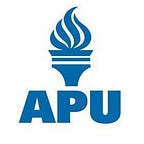By Dr. William Oliver Hedgepeth
Faculty Member, Transportation and Logistics Management, American Public University
Hundreds of restaurants claim they make the perfect pancake. But what makes the end of the pancake supply chain so memorable? For many of us pancake lovers, it’s the maple syrup.
The Maple Syrup Supply Chain Starts at the Tree
Pancakes are at the end of a complex food supply chain. But the one part of that supply chain that is on your Sunday morning plate is the sweet maple syrup mixing with a melting pool of butter and running down that stack of pancakes.
When we examine the start of a supply chain, we begin with the raw materials that could come from the ground, the sea or in the air. The initial raw material for maple syrup is a tree.
But what kind of tree? There are a variety of possible trees: sugar maple, red maple, Norway maple, box elder and silver maple. The sugar maple tree from Canada seems to be the best choice; it produces about twice as much sugar as the others.
This process begins by finding a healthy tree in the summer or fall. If the leaves have turned color and there are no dead branches, that is a tree to use. And the tree needs to be at least 10 inches in diameter.
Maple syrup is most commonly a product of sugar maple trees. These trees grow in abundance in the province of Quebec. “Canada produces 71% of all the world’s pure maple syrup, with 91% originating from within Quebec,” according to World Atlas.
To Tap a Maple Sugar Tree, You Need a Drill, a Metal Tap or Tube, and a Bucket
When the winter comes, the cold temperatures make a starch compound in the tree roots that start to rise into the tree’s trunk and limbs. You will need some tools such as a drill, a metal tap or tube, and a two-gallon bucket. The process to get that starch out of the tree starts with a hole drilled in the tree.
Second, the metal tube is inserted into the hole and the liquid starch starts dripping into the bucket at the end of the tube.
Third, using a five-inch diameter stainless steel fine mesh strainer pour the sap from the bucket into a storage container. That will remove insects, bits of bark and anything else that doesn’t belong.
Fourth, once enough sap is collected, heat it in a large metal boiler until its starch turns into sweet maple syrup. It takes about 80 gallons of starch to produce two gallons of syrup.
Fifth, the syrup is ready once the right consistency is reached in the boiling process. This five-step process of harvesting and manufacturing maple syrup sounds simple, but be careful when the sugar part of the liquid forms. You can get burned.
The rest of the supply chain is not complex, just transportation and storage between the companies that produced the maple syrup, the grocery store, and then to your home.
Maple Syrup Imitations and a Health Warning
However, be aware that pancake syrup and maple syrup are not the same. Pancake syrups are mostly made of corn syrup plus a few preservatives and flavor enhancers. It is not maple syrup tapped from a tree.
Consumer Reports warns that pancake syrup’s caramel coloring “may pose a health risk” from the potential carcinogen 4-MEI.
Maple syrup contains different nutrients than common table sugar and it a natural product. But both products do contain sugars.
Not all bottles labeled maple syrup contain the 100% syrup as described. If you want, you can make your own maple syrup at home.
One method is to use Karo® Light Corn Syrup, mixed with sugar and water and less than a teaspoon of real sugar maple syrup. Another version, called grandma’s recipe, is to mix sugar, honey, maple syrup extract, vanilla extract and hot water. But why bother when you can buy the real thing at any grocery store?
National Maple Syrup Day Is Fast Approaching
Yes, there is a National Maple Syrup Day to celebrate the virtues of that golden liquid. This year, it is December 17. Or, you could wait for National Pancakes Day, which occurs twice a year on September 26 and March 12.
So, on those happiest of days plan to get up early and prepare an extra-large stack of pancakes cascading with pure 100% maple syrup. Or, if you can’t do that, then plan to arrive early at your local Pancake House or IHOP.
About the Author
Dr. Oliver Hedgepeth is a full-time professor at American Public University (APU). He was program director of three academic programs: Reverse Logistics Management, Transportation and Logistics Management and Government Contracting. He was Chair of the Logistics Department at the University of Alaska Anchorage. Dr. Hedgepeth was the founding Director of the Army’s Artificial Intelligence Center for Logistics from 1985 to 1990, Fort Lee, Virginia.
